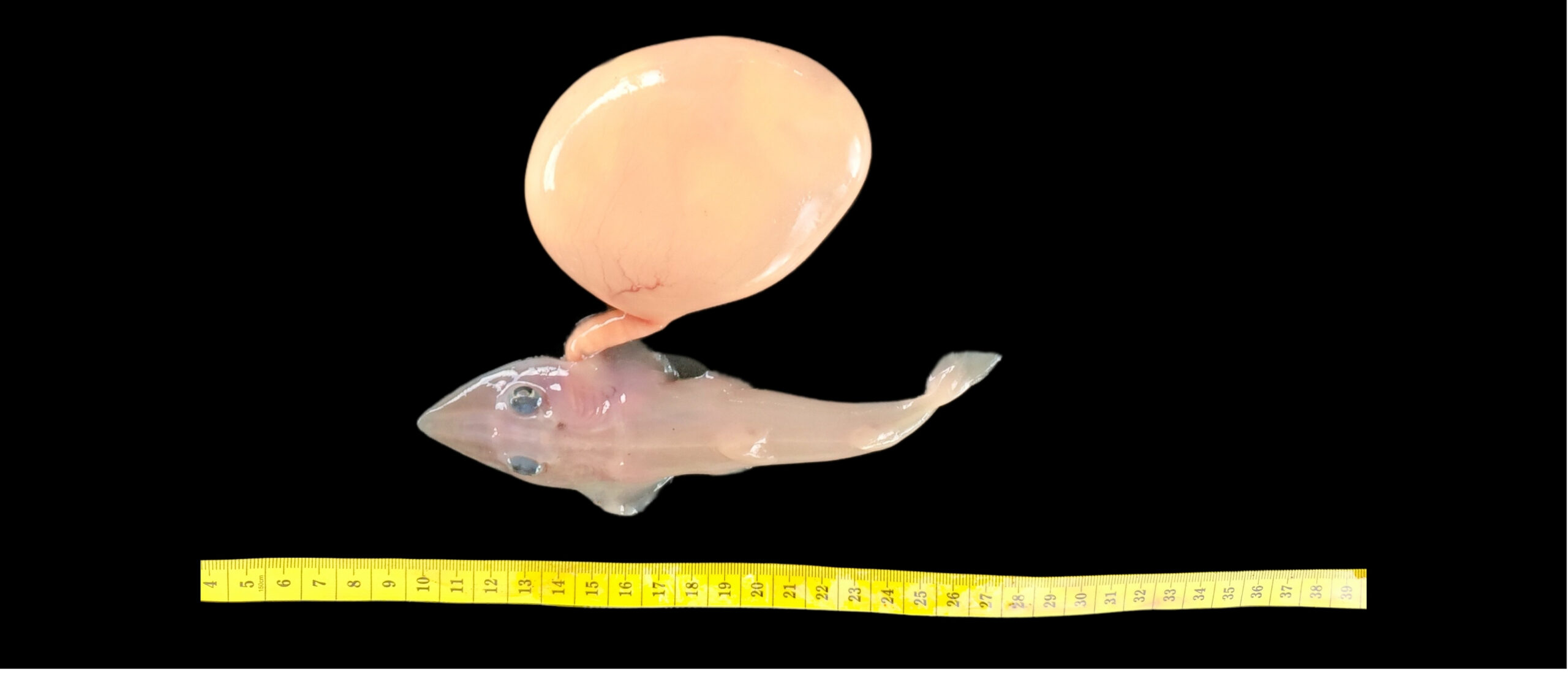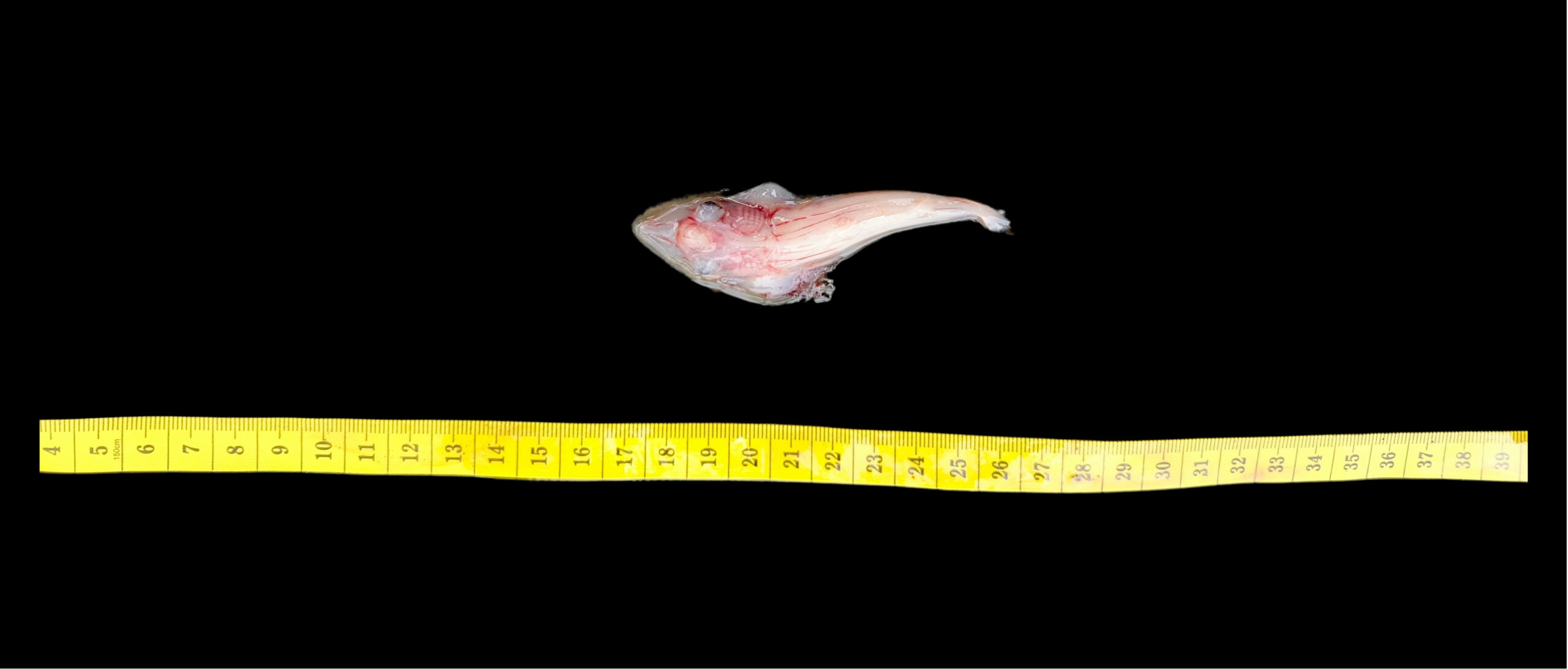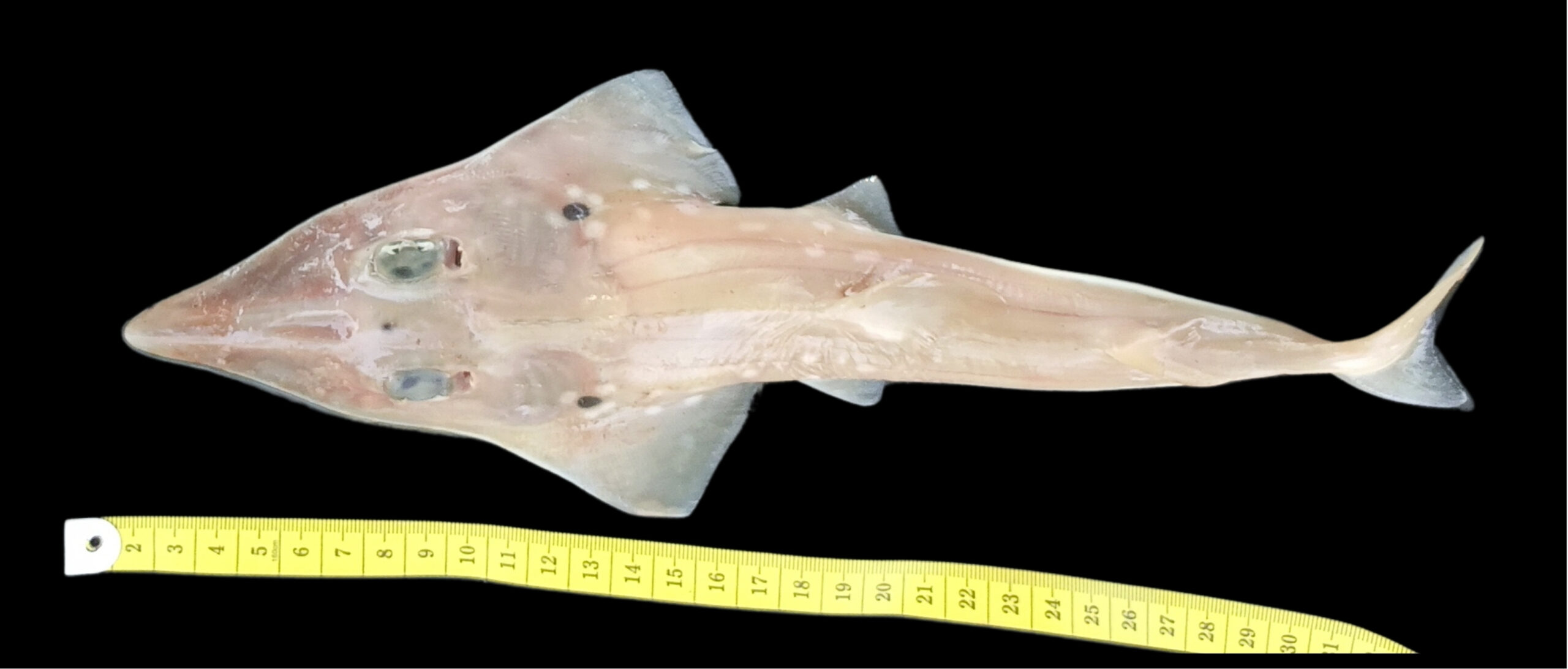Reproduction of rhinorays
Many sharks and rays give birth to live babies or pups, including the rhinorays species group, while some lay eggs. Similar to other species from the Order of Rhinopristiformes (sawfish, shovelnose ray), rhinoray pups are developed from embryos inside the uterus of their mothers. However, unlike mammals and few elasmobranch species (e.g. thresher and mako sharks), there is no placenta connecting the mothers and the embryos. Instead, each embryo has an external yolk sac, where they get their nutrients in the early stage.

Early embryo stage of bottlenose wedgefish (R. australiae). Photo © Elasmobranch Project Indonesia
The embryos of rhinorays are semi-translucent before they turn pink when they first develop. They will then slowly grow big and their pink coloration will turn greyish. Unlike those from the order of Orectolobiformes (e.g. zebra and epaulette sharks), the rhinorays embryos are a miniature resemblance of the adult individuals. As observed in the field, a similarity was shown as observed in tiger sharks, the rhinorays embryos started to grow white dots along their ventral side, before then forming a fully developed embryos ready to be born.

Early embryo stage of bottlenose wedgefish (R. australiae). Photo © Elasmobranch Project Indonesia
Moving to the mothers, several pregnant wedgefish individuals were recorded by the Elasmobranch Project Indonesia (EPI). They were captured from the Karimunjawa National Park waters, indicating the possible use of the area to give birth and as a nursery ground. Further assessments are currently undertaken by EPI in collaboration with experts to better understand how the habitats within the park are used by the species. There is an early indication of a nursery and pupping grounds for rhinorays, as assessed together with the Important Shark and Ray Areas (ISRA) team. EPI is also working together with local fishers in research to better understand this aspect of the rhinorays while increasing the awareness of the locals in order to support the conservation of this critically endangered elasmobranch group.

Minitature adult of bottlenose wedgefish (R. australiae). Photo © Elasmobranch Project Indonesia
